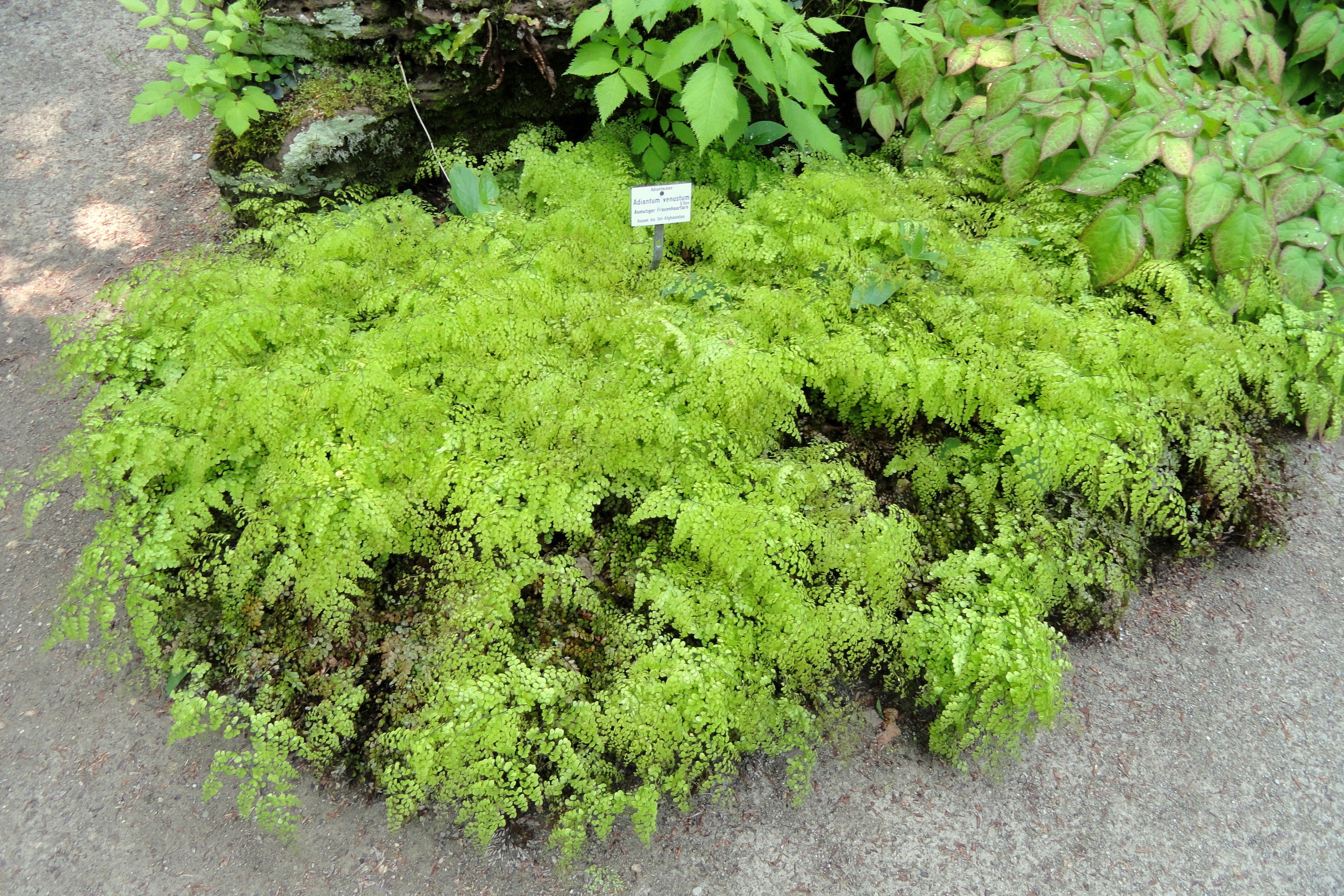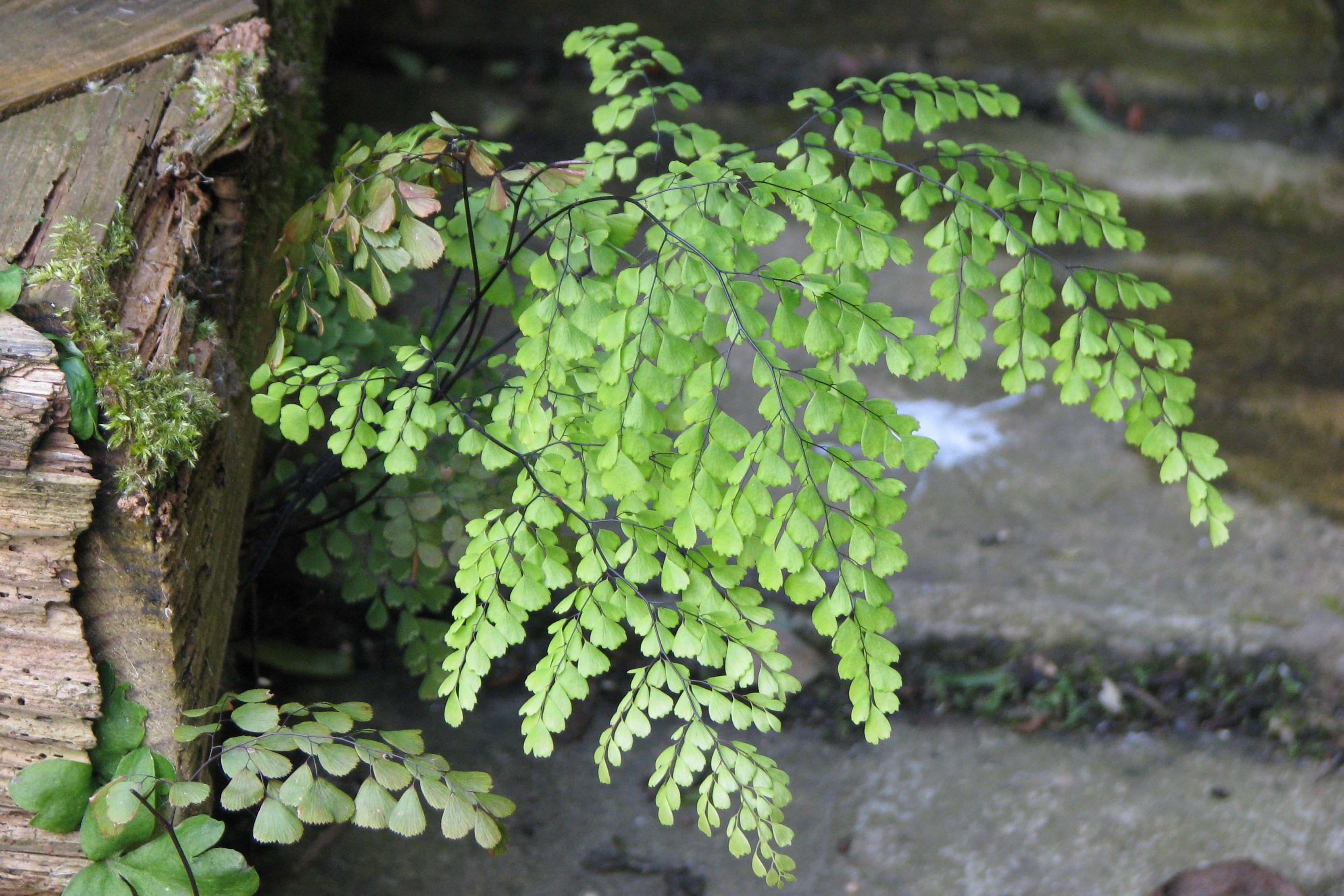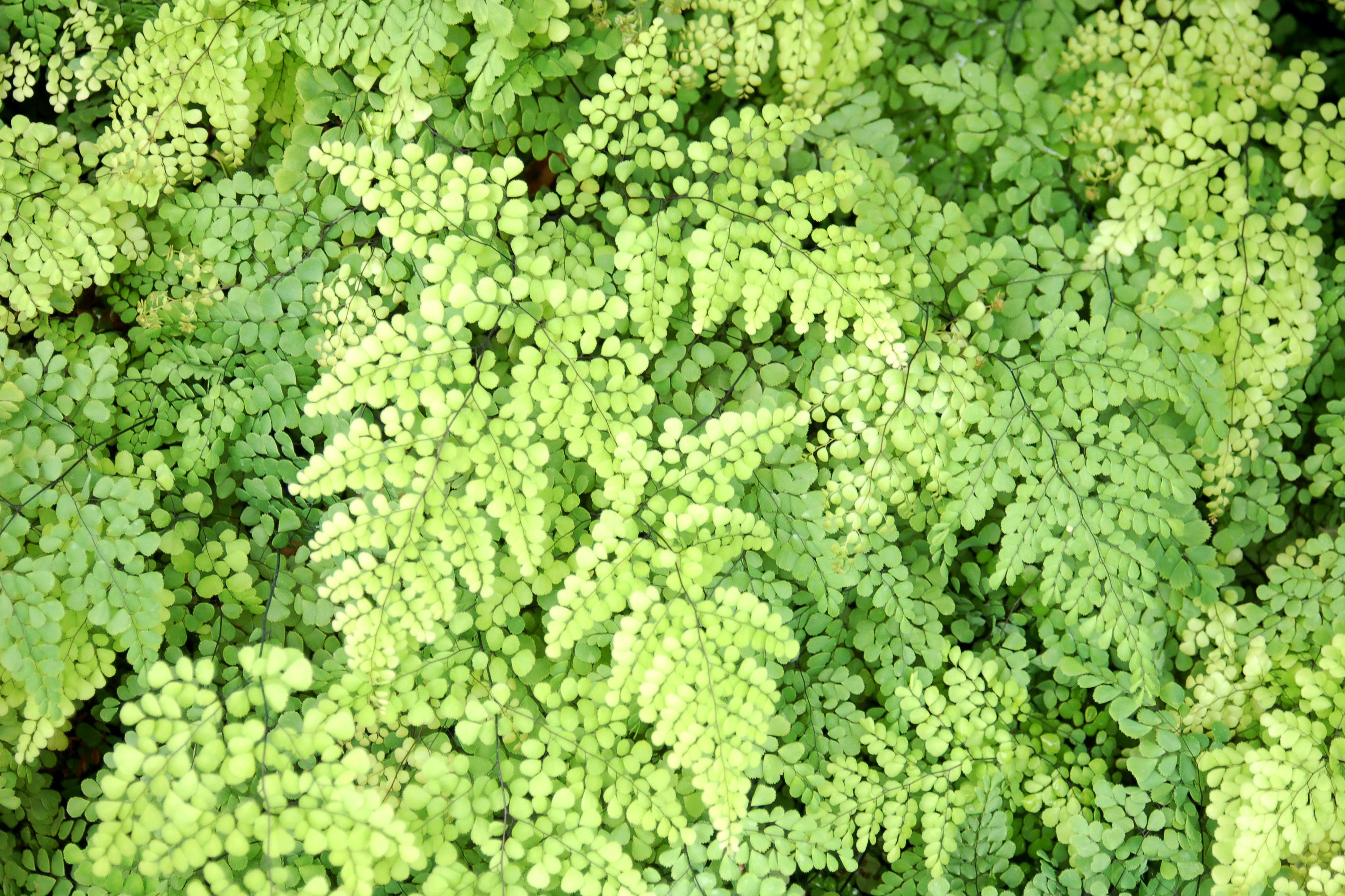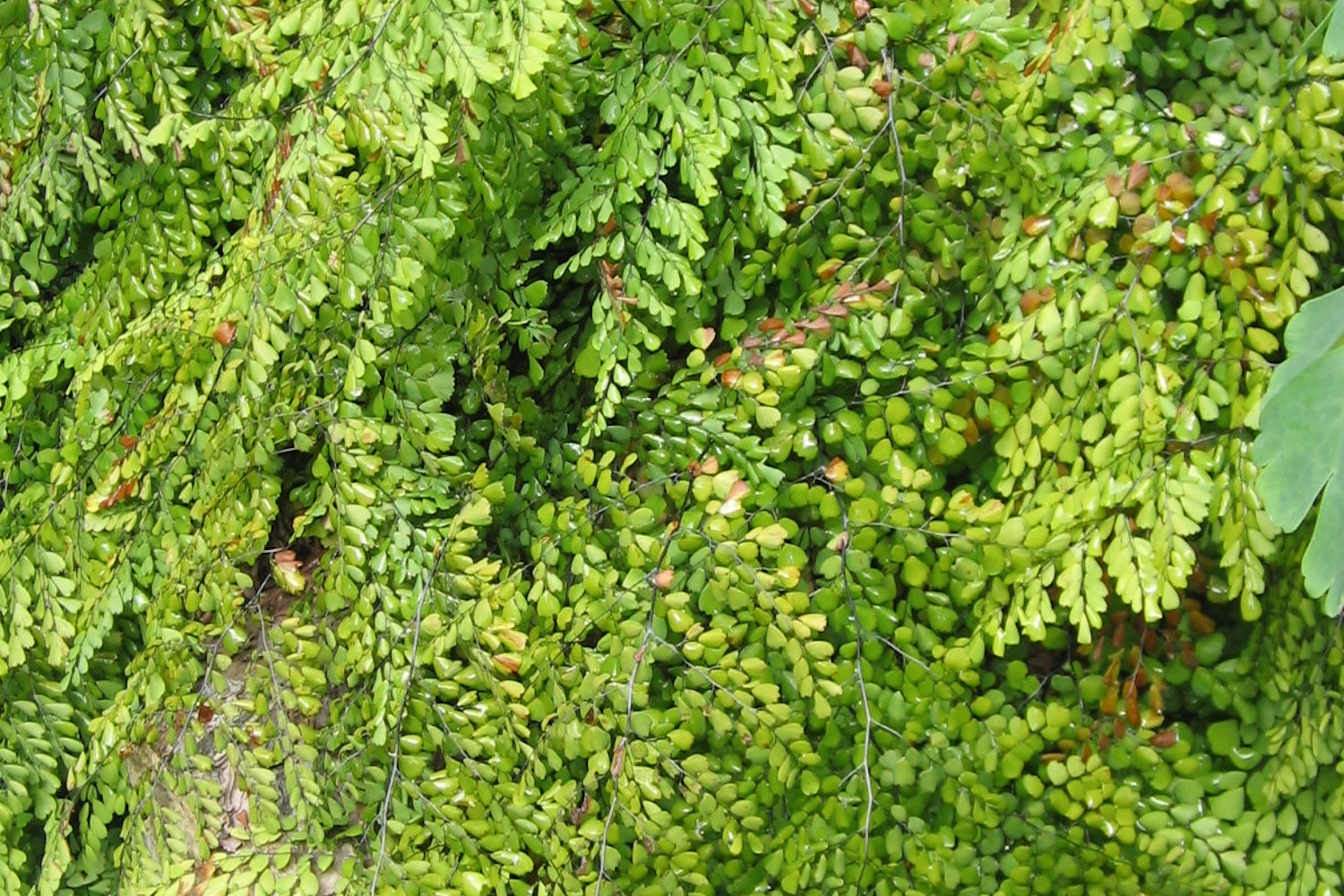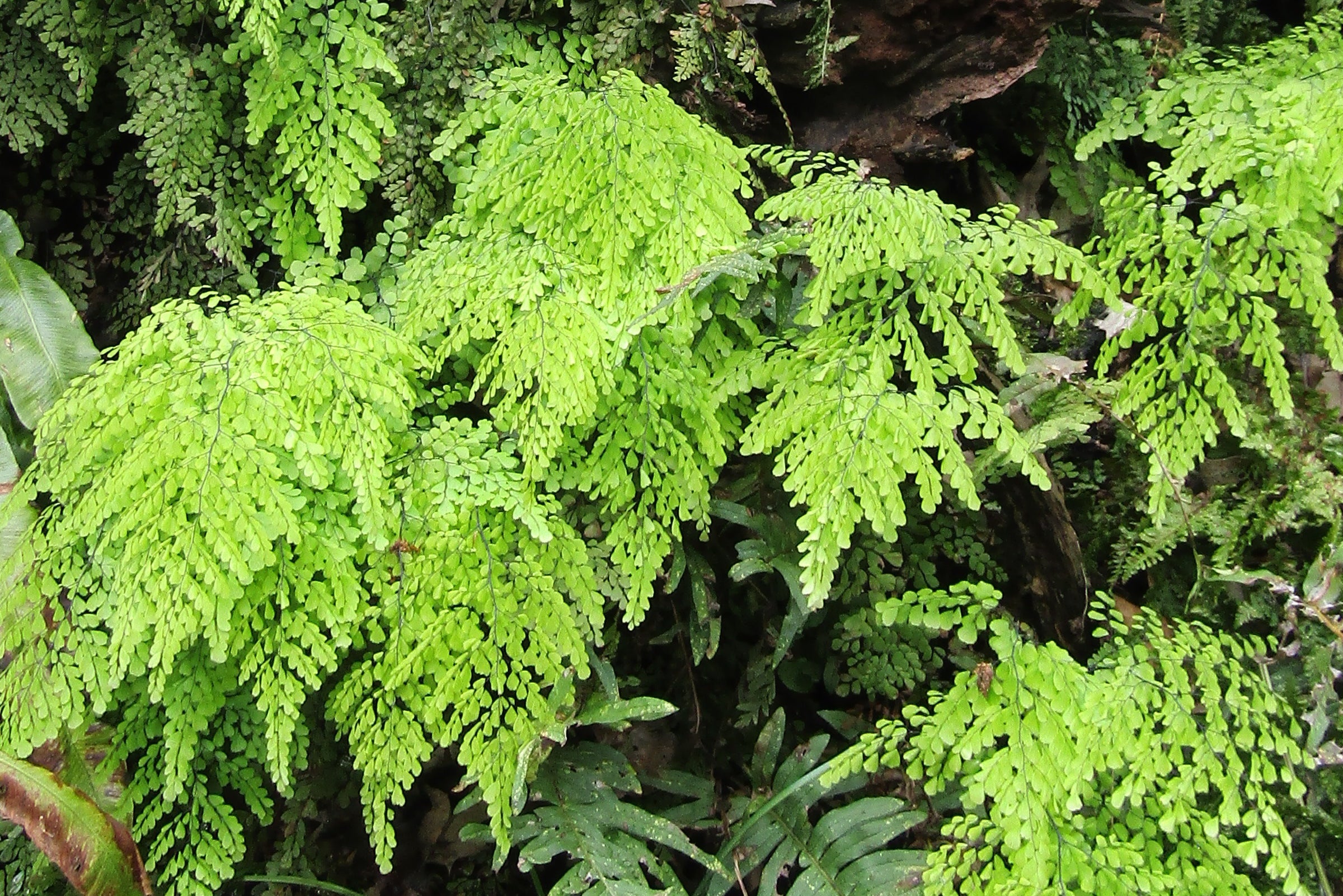Adiantum venustum
Approx. 0.5 litre pot
About this cultivar:
Adiantum venustum is technically a deciduous fern but is largely evergreen to -10 °C when it becomes deciduous. Thus it is commonly called the evergreen maidenhair (or Himalayan maidenhair)
Native to China and the Himalayas, it is a slow to establish plant that usually grows on moist rocks and soil with a good amount of humus and dead leaves. The soft green fronds are triangular, with numerous fan-shaped segments on each frond, with black stems (It is also known as black Hansraj in India for its black stalks at the fronds).
These fan-shaped segments often turn an attractive rusty-brown in autumn and winter. The roots are rhizomatous and after an initial clump the whole plant forms a slowly spreading mat.
One of the best garden ferns around this has the RHS Award of Garden Merit, so people like it! The epithet venustum even means charming! But don't let that fool you, this plant is as hard as Himalayan nails!
- Position: Partial shade, Full shade
- Soil: Almost any soil - grows well in Ballyrobert!
- Flowers: Non-flowering, but interest January, February, March, April, May, June, July, August, September, October, November, December
- Other features: Royal Horticultural Society Award of Garden Merit (RHS AGM), Suitable for Container, Woodland Plant, Interesting Foliage or Fruit
- Hardiness: H7 - Hardy in the severest European continental climates (< -20°C), Fully hardy - grows well in Ballyrobert!
- Habit: Clump forming, Mat forming, Bushy
- Foliage: Semi evergreen
- Height: 15 - 25 cm (0.5 - 1 ft)
- Spread: 15 - 25 cm (0.5 - 1 ft)
- Time to full growth: 10 to 20 years
- Plant type: Herbaceous Perennial, Fern
- Colour: Green
- Goes well with: -
About this genus:
Adiantum is a genus of about 250 species of ferns. The highest species diversity is in the Andes. Fairly high diversity also occurs in eastern Asia, with nearly 40 species in China.The common name is the maidenhair fern, whilst the genus name comes from Greek word adiantos, meaning ‘unwetted’, referring to the fronds' ability to shed water without becoming wet.
They are distinctive in appearance, with dark, often black stipes (stalks) and rachises (shafts), and bright green, often delicately cut leaf tissue. The sori (spore clusters) are borne submarginally (underside of the leaf, at the margins), and are covered by reflexed (curled back) flaps of leaf tissue (a lot of translation going on in this paragraph).
In terms of historic uses, I’ll forgo any anecdotes because we’ll be here all day. You name it, they have probably used Adiantum for it…..... OK,OK,OK! just one! …baldness…it is called maidenhair right? So based on the ‘doctrine of signatures’ - the theory that God placed a ‘mark’ on each plant to alert mortals to its uses- Adiantums mark was an appearance that gave rise to the name maidenhair.
With such a wide range of species it is difficult to generalise, but they generally prefer humus-rich, moist, well-drained sites, ranging from near riverbeds to vertical rock walls. Many species are especially known for growing on rock walls around waterfalls and water seepage areas. They often will tolerate excess water if there is a bit of excess sun. Will also tolerate dry shade. Often grown indoors as well as outdoors.
As the name implies this is one of the most beautiful genus of ferns that tend to look pretty but are also pretty tough.

